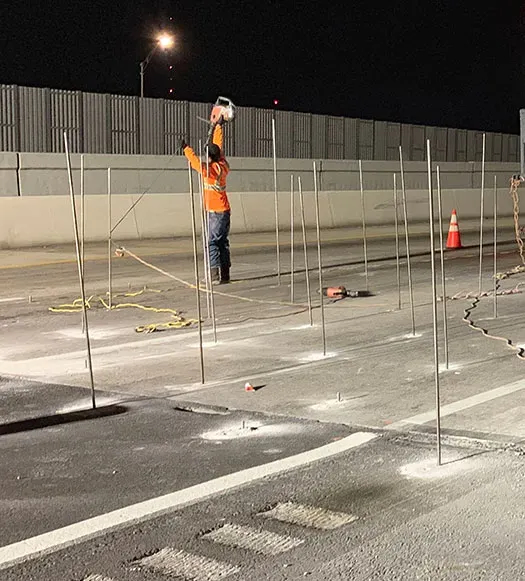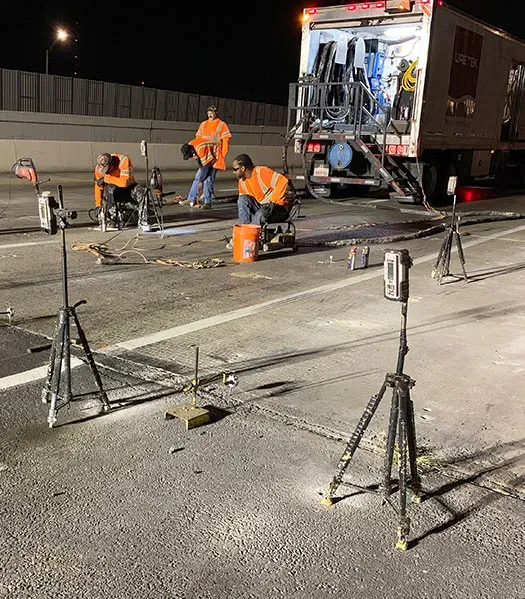I-40 Bridge Approach Stabilization in Knoxville
Problem
Interstate 40 runs across the entire state of Tennessee, from the Arkansas state line in the west to the North Carolina border in the east. It connects the state’s three largest cities, and where it passes through downtown Knoxville, settlement at the transition between the asphalt pavement and the approach / departure slabs of a large bridge at MM 388.5 resulted in significant dips of over two inches and poor, dangerous driving experiences for over 100,000 drivers every day. With so many drivers relying on safe travel across this important bridge, TDOT Region 1 engineers called URETEK to come take a look at the situation and recommend a solution.
Analysis
Dynamic Cone Penetrometer (DCP) testing confirmed the problem. The approach and departure slabs, along with the sleeper slabs at the transitions to the asphalt, were originally constructed over back-fill materials. Over time, the back-fill materials had consolidated and shifted, leading to the current subsidence issue. URETEK consulted with TDOT personnel and determined that URETEK Deep Injection® (UDI) would provide an ideal solution for the pavement dip issues, lifting the settled portions to remove the dip and stabilizing the subsurface soils below.
Solution
After consulting with TDOT engineers URETEK crews performed UDI, injecting polyurethane grout to fill subsurface voids, strengthen and stiffen the back-fill soils, and support the settling concrete and asphalt areas to mitigate future subsidence issues. Crews worked overnight shifts to minimize the impact to traffic on this busy stretch of I-40. Final strategic injections of polyurethane lifted the settled surfaces, eliminating the large dip at the bridge approach and improving safety and comfort for drivers.
Result
Over the course of nine evening shifts (10pm to 5am), URETEK crews treated all three lanes and two full shoulders at the approach and departure of the bridge’s eastbound lanes. TDOT provided traffic control and the work was coordinated to have the smallest possible impact on traffic through a busy section of interstate. The supporting soils were stabilized, the dips were significantly reduced, and the project finished on budget.
URETEK Deep Injection® (UDI)
Widely referenced throughout our industry, UDI involves the injection of structural polymer into base and subgrade soils to increase the load bearing capacity. This is achieved by injecting the polymer through small holes drilled directly through the pavement structure to depths determined by site-specific analysis. Our URETEK 486 Star® material flows easily into voids and weak zones within the soil mass below. Through a controlled chemical reaction, the expanding polymer compacts surrounding soils and applies a controlled pressure on targeted areas of the affected pavement above. If needed, a multi-injection design plan is utilized to gently return the pavement to its original grade. The composite material quickly cures into a strong, dimensionally stable, and water-resistant geo-material, providing years of reliable service.
URETEK 486 Star®
URETEK 486 Star® polymer is a two-component, high-density, expanding thermoset polyurethane system. It was developed to be the ideal solution for under-sealing, void filling, lifting of settled pavement, stabilization and stiffening of weak soils, and for encapsulating and sealing buried infrastructure. URETEK 486 Star® is environmentally inert, non-toxic, and resists underground water erosion or weakening due to its industry-leading hydrophobic properties.


